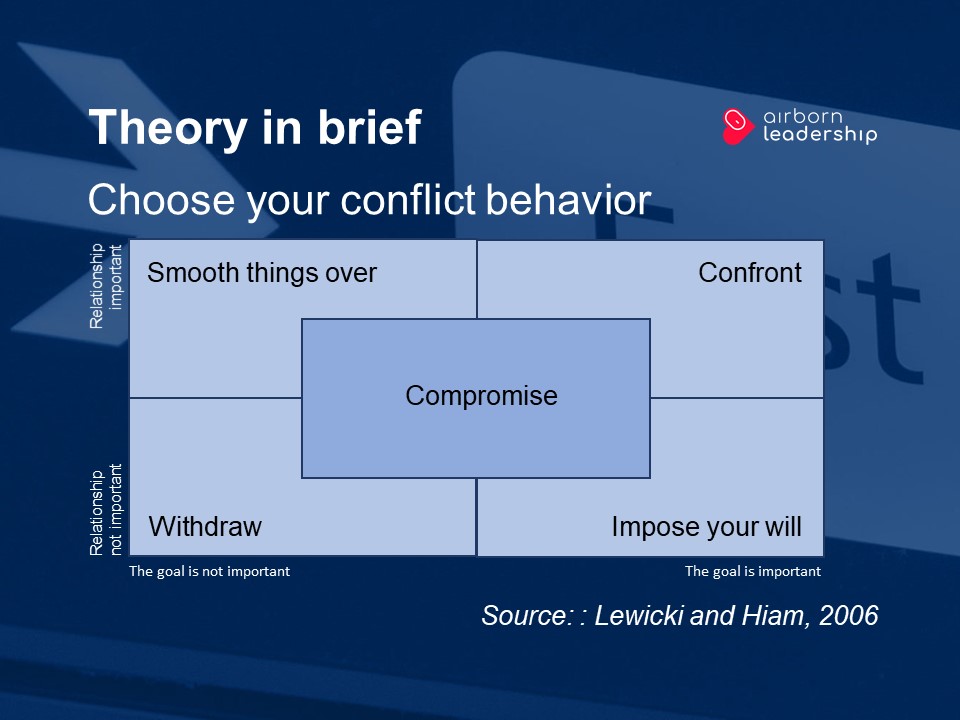Choice of strategy for conflict behavior
 Read your counterparts’ style and choose your conflict behavior accordingly
Read your counterparts’ style and choose your conflict behavior accordingly
The figure illustrates the variations of typical conflict behavior, depending on whether the relation or the case is more or less important to us. This is something you have to be aware of when solving conflicts. You cannot be sure that your counterpart regards the case or your relation with the same importance as you do – or vice versa.
You confront, when both the relation and the case is of importance to you. This often happens when you need an integrated solution based on both parties’ interests and where the goal also is about learning for both parties. You do it to create a mutual obligation by implementing both parties’ interests and creating consensus.
You withdraw, when neither the relation nor the case is important. There are cases which are rather trivial compared with other things you have to deal with at that time and where you don’t see much chance of getting your point of view across. You also use this style when you need to cool down agitated people.
You impose your will, when the case is important but the relation is of less importance, or when you deal with people who do not stand up for themselves. It is often in these situations a quick and unhesitating decision is needed, because the issue is of vital importance for the project and you as project manager know you are right. It can be in situations where unpopular decisions have to be made.
You smooth things over, when the relation is important but the issue is of less importance to you. This style should be used when the issue is of greater importance for your counterpart and you want to maintain the good relationship. It might also be that you have discovered you were wrong and you want to show that you would like a long term relation.
You compromise, when the case is rather important but you consider it not worth the risk of harming the relation. You also choose this style when you and your counterpart share influence and power and you both consider the case important. The strategy can also be used when you want to find temporary solutions to relatively complicated problems, or you want to find acceptable solutions when you’re pressed for time.
Book by Lewicki & Hiam
Mastering Business Negotiation: A Working Guide to Making Deals and Resolving Conflict by Roy J. Lewicki, Alexander Hiam, Publisher: Jossey-Bass; 1 edition (July 21, 2006). ISBN-13: 978-0787980993. ISBN 10: 0787980994




